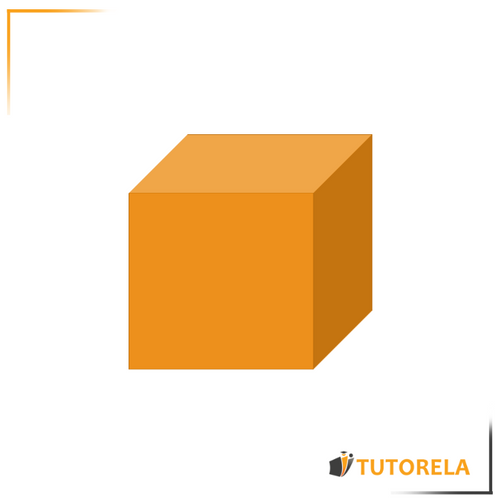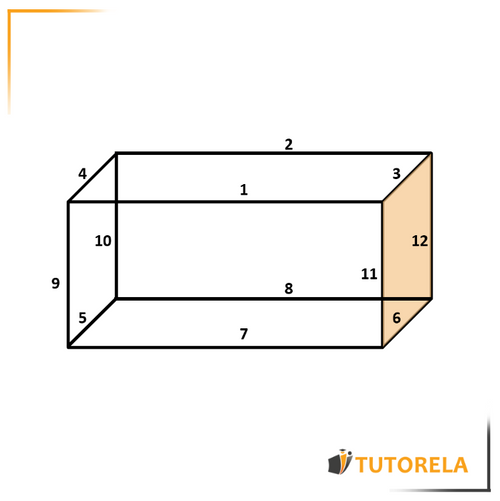The rectangular prism is a three-dimensional figure composed of rectangles.
Parts of a Rectangular Prism
Parts of a Rectangular Prism
Every rectangular prism has:
faces -> rectangles that make up the rectangular prism.
edges -> (in length, width, and height).
vertices -> the corners where the edges meet.
Test yourself on parts of a cuboid!

The number of vertices in the cuboid is:
The parts of a rectangular prism
Rectangular prism! What a magnificent figure!
In this article, we will learn about the rectangular prism and its parts.
What is a rectangular prism?
A rectangular prism can look like this:

- like this:

- even like this:

As long as it is a three-dimensional figure composed of rectangles, it will be a rectangular prism.
In the case that all the rectangles are equivalent, that is, length = width = height, we would be talking about a cube.
How many edges does a cuboid have?
The number of faces in the cuboid is:
The volume of the cuboid is es:
Parts of a Rectangular Prism
Now let's see what parts make up a rectangular prism
Faces
The rectangles that make up the rectangular prism are called faces,
therefore, the rectangular prism has faces:
The quadrilateral of the cuboid is:
Look at the cuboid in the figure.
Which of the following is an edge of the given cuboid?
Which of the shapes has a dotted diagonal equal in length to the dotted diagonal shown below?
Edges
The rectangular prism has edges or sides.
Let's see them painted orange in the illustration:

More data about the edges
The rectangular prism has length, width, and height.
The width edge is identical to all the other width edges of the rectangular prism, there are like it.
The length edge is identical to all the other length edges of the rectangular prism, there are like it.
The height edge is identical to all the other height edges of the rectangular prism, there are like it.
Let's see what it's about in the illustration:

Height: marked in yellow
Width: marked in red
Height: marked in purple (violet)
Note: when it comes to a cube, the length is = to the width, which is also = to the height.
Vertices
The vertices are those that join the edges of the rectangular prism.
Each rectangular prism has vertices.
Let's see them painted red in the illustration:

How many diagonals identical to the dotted diagonal in the diagram are there in the rectangular prism?
Look at the dotted diagonal in the figure below.
Which diagonals of the rectangular prism are equal?
Identify which of the following line segments is the diagonal of the rectangular prism?
Face Diagonals
The diagonals that go from one vertex to another on the same face are called external diagonals.
The vertices must belong to the same face.
Let's see an example in the illustration:

Diagonals of the Rectangular Prism
The diagonals that go from one vertex to another vertex of a different face are called the diagonals of the orthohedron or internal diagonals.
The vertices are not on the same face.
Let's see an example in the illustration:

Exercise:
How many vertices are there in the rectangular prism?
Answer:
vertices.
How many faces are there in the rectangular prism?
Answer:
faces.
How many edges are there in the rectangular prism?
A.
B.
C.
D.
Answer: B. edges.
Examples and exercises with solutions of the parts of a rectangular prism
Exercise #1
How many edges does a cuboid have?
Video Solution
Step-by-Step Solution
"Edges" is the name of the box's sides. Since a box is a three-dimensional shape, we call these parts edges.
Counting the edges of a box, we can see that there arehas 12 edges:

Answer
Exercise #2
Look at the dotted diagonal in the figure below.
Which diagonals of the rectangular prism are equal?
Video Solution
Step-by-Step Solution
Let's look at the face AEHD
In it, there is another diagonal equal to ED, which is AH
Let's look at the face BFGC which is identical and equal to AEHD, in which there are two diagonals that are also equal to ED:
Answer
Exercise #3
Identify which of the following line segments is the diagonal of the rectangular prism?
Video Solution
Step-by-Step Solution
A box diagonal is a diagonal that passes between two vertices that are not connected,
meaning, the diagonal passes through the box, and not on one of its edges.
Let's see which of the segments in the answers passes entirely through the box from end to end.
AC, HF and FC are all diagonals that lie on the edges of the box, therefore the segment that fits this description is BH.
Answer
Exercise #4
The number of vertices in the cuboid is:
Video Solution
Answer
Exercise #5
The number of faces in the cuboid is:
Video Solution
Answer
Which is the longest line indicated in the diagram?
Choose the dimensions that represent an orthohedron with a square base.
Choose the dimensions that represent an orthohedron with a square base.









